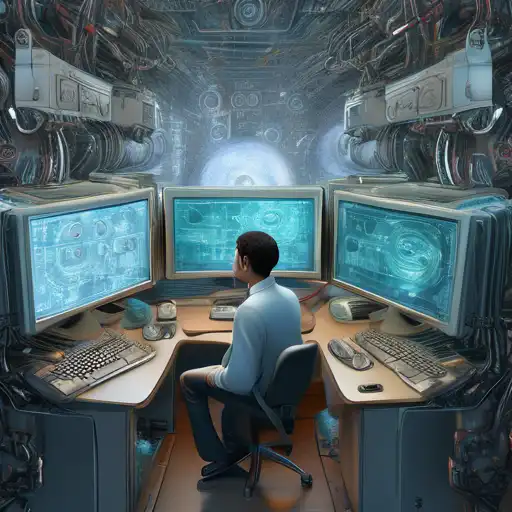Empowering Machines with Sight: The Future of Computer Vision
In the realm of artificial intelligence, computer vision stands as a groundbreaking technology that enables machines to interpret and understand the visual world. By leveraging digital images from cameras and videos and deep learning models, machines can accurately identify and classify objects—and then react to what they "see."
Understanding Computer Vision
Computer vision is a field of artificial intelligence that trains computers to interpret and understand the visual world. Using digital images from cameras and videos and deep learning models, machines can accurately identify and classify objects—and then react to what they "see."
From self-driving cars to facial recognition systems, computer vision is transforming industries by enabling machines to perform tasks that require visual understanding. The technology is not just about seeing; it's about comprehending the context of the visual data to make informed decisions.
How Computer Vision Works
At its core, computer vision involves acquiring, processing, analyzing, and understanding digital images to extract meaningful information. This process typically involves several steps:
- Image Acquisition: Capturing images or videos from the real world using cameras.
- Pre-processing: Enhancing the image quality to improve the accuracy of the analysis.
- Feature Extraction: Identifying and isolating distinct features or patterns in the image.
- Detection/Segmentation: Determining the presence of objects or features within the image.
- Recognition/Classification: Assigning a label to an object based on its features.
- Understanding: Interpreting the recognized objects within a broader context.
Applications of Computer Vision
Computer vision has a wide range of applications across various sectors. Here are a few examples:
- Healthcare: From diagnosing diseases through medical imaging to assisting in surgeries, computer vision is revolutionizing patient care.
- Retail: Automated checkout systems and inventory management are just the beginning of how computer vision is changing the retail landscape.
- Automotive: Self-driving cars rely heavily on computer vision to navigate roads safely.
- Security: Facial recognition and surveillance systems use computer vision to enhance security measures.
The Future of Computer Vision
As technology advances, the potential applications of computer vision are boundless. With the integration of artificial intelligence and machine learning, computer vision systems are becoming more accurate and efficient. The future may see computer vision technologies that can interpret emotions, predict behaviors, and even understand complex scenes in real-time.
In conclusion, computer vision is a transformative technology that is teaching machines to see and understand the world around us. Its applications are vast and varied, impacting nearly every industry. As we continue to advance in AI and machine learning, the capabilities of computer vision will only expand, opening up new possibilities for innovation and improvement in our daily lives.
